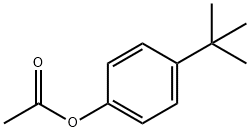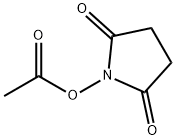1,3-DIMETHYLBUTYL ACETATE
- CAS NO.:108-84-9
- Empirical Formula: C8H16O2
- Molecular Weight: 144.21
- MDL number: MFCD00053723
- EINECS: 203-621-7
- SAFETY DATA SHEET (SDS)
- Update Date: 2024-12-18 14:15:30

What is 1,3-DIMETHYLBUTYL ACETATE?
Description
sec-Hexyl acetate is a colorless liquid with amild, pleasant,fruity odor. Molecular weight= 144.24;Specific gravity (H2O:1) = 0.86; Boiling point= 147.2℃;FreezingMelting point= -63.88C; Relative vapor density(air= 1) = 5.0;V aporpressure = 3 mmHg:Flashpoint = 45℃; Autoignition temperature = 266℃. Explosivelimits: LEL= 0.9%; UEL = 5.7%. Hazard Identification(based onNFPA-704MRating System): Health 1,Flammability 2, Reactivity 0. Insoluble in water.
Chemical properties
Colorless liquid; mild odor. Insoluble in water; soluble in alcohol. Combustible.
Chemical properties
All isomers of amyl acetate are highly flammable, colorless to yellow, watery liquids.
The Uses of 1,3-DIMETHYLBUTYL ACETATE
Solvent for nitrocellulose and other lacquers.
The Uses of 1,3-DIMETHYLBUTYL ACETATE
Lacquer industry; fragrances; flavor compositions
Production Methods
sec-Hexyl acetate is produced via catalytic reaction of 4- methyl-2-pentanol and acetic acid. It also occurs naturally in apples and their leaves.
Preparation
by direct esterification of Methyl-iso-butylcarbinol with Acetic acid or Acetic anhydride.
General Description
A clear colorless liquid. Flash point 95°F. Less dense than water and insoluble in water. Vapors heavier than air.
Air & Water Reactions
Highly flammable. Insoluble in water.
Reactivity Profile
1,3-DIMETHYLBUTYL ACETATE is an ester. Esters react with acids to liberate heat along with alcohols and acids. Strong oxidizing acids may cause a vigorous reaction that is sufficiently exothermic to ignite the reaction products. Heat is also generated by the interaction of esters with caustic solutions. Flammable hydrogen is generated by mixing esters with alkali metals and hydrides. 1,3-DIMETHYLBUTYL ACETATE is incompatible with the following: Nitrates; strong oxidizers, alkalis & acids .
Hazard
Moderate fire risk. Toxic by inhalation.
Health Hazard
Headache, dizziness, nausea, irritation to respiratory passages. Irritates eyes.
Fire Hazard
HIGHLY FLAMMABLE: Will be easily ignited by heat, sparks or flames. Vapors may form explosive mixtures with air. Vapors may travel to source of ignition and flash back. Most vapors are heavier than air. They will spread along ground and collect in low or confined areas (sewers, basements, tanks). Vapor explosion hazard indoors, outdoors or in sewers. Runoff to sewer may create fire or explosion hazard. Containers may explode when heated. Many liquids are lighter than water.
Chemical Reactivity
Reactivity with Water No reaction; Reactivity with Common Materials: No reaction; Stability During Transport: Stable; Neutralizing Agents for Acids and Caustics: Not pertinent; Polymerization: Not pertinent; Inhibitor of Polymerization: Not pertinent.
Potential Exposure
(n-isomer): Primary irritant (w/o allergic reaction), (sec-isomer) Human Data. Amyl acetates are used as industrial solvents and in the manufacturing and dry-cleaning industry; making artificial fruit-flavoring agents; cements, coated papers, lacquers; in medications as an inflammatory agent; pet repellents, insecticides and miticide. Many other uses.
First aid
If this chemical gets into the eyes, remove anycontact lenses at once andirigate immediately for at least15 min, occasionally lifting upper and lower lids. Seek med-ical attention immediately. If this chemical contacts theskin, remove contaminated clothing and wash immediatelywith soap and water. Seek medical attention immediately. Ifthis chemical has been inhaled, remove from exposure,begin rescue breathing (using universal precautions, includ-ing resuscitation mask) if breathing has stopped and CPRif heart action has stopped. Transfer promptly to a medicalfacility. When this chemical has been swallowed, get medi-cal attention. Give large quantities of water and inducevomiting. Do not make an unconscious person vomit.
Environmental Fate
Chemical/Physical. Slowly hydrolyzes in water forming 4-methyl-2-pentanol and acetic acid.
storage
Color Code- _Red: Flammability Hazard: Store ina flammableliquid storage area or approved cabinet awayfrom ignition sources and corrosive and reactive materials.Prior to working with hexyl acetate you should be trainedon its proper handling and storage. Before entering confinedspace where this chemical may be present, check to makesure that an explosive concentration does not exist. Store intightly closedcontainers in a cool, well-ventilated area.Metal containers involving the transfer of this chemicalshould be grounded and bonded. Where possible, automati-cally pump liquid from drums or other storage containers toprocess containers. Drums must be equipped with self-clos-ing valves, pressure vacuum bungs, and flame arresters. Useonly nonsparkingtools and equipment, especially whenopening and closing containers of this chemical. Sources ofignition, such as smoking and open flames, are prohibitedwhere this chemical is used, handled, or stored in a mannerthat couldcreate a potential fire or explosion hazard. .Wherever this chemical is used, handled, manufactured, orstored, useexplosion-proof electricalequipmentandfittings. .
Shipping
UN1993 Flammable liquids, n.o.s., Hazard Class: 3; Labels: 3-Flammable liquid, Technical Name Required.
Incompatibilities
Vapors may form explosive mixture with air. Incompatible with oxidizers (chlorates, nitrates, peroxides, permanganates, perchlorates, chlorine, bromine, fluorine, etc.); contact may cause fires or explosions. Keep away from alkaline materials, strong bases, strong acids, oxoacids, epoxides, nitrates. May soften certain plastics.
Waste Disposal
Dissolve or mix the material with a combustible solvent and burn in a chemical incinerator equipped with an afterburner and scrubber. All federal, state, and local environmental regulations must be observed. In accordance with 40CFR165, follow recommendations for the disposal of pesticides and pesticide containers. Must be disposed properly by following package label directions or by contacting your local or federal environmental control agency, or by contacting your regional EPA office.
Properties of 1,3-DIMETHYLBUTYL ACETATE
| Melting point: | -80.9°C (estimate) |
| Boiling point: | 144°C |
| Density | 0,86 g/cm3 |
| vapor pressure | 4 (NIOSH, 1997) |
| refractive index | 1.4000-1.4020 |
| Flash point: | 45°C |
| solubility | Soluble in alcohol and ether (Weast, 1986). |
| form | Clear liquid |
| color | Colorless liquid with a fruity odor |
| Specific Gravity | 0.86 |
| Odor | Fruity; mild, pleasant; mild and nonresidual. |
| Water Solubility | 0.008 wt % at 20 °C (NIOSH, 1997) |
| Henry's Law Constant | (x 10-3 atm?m3/mol):
9.5 at 20 °C (approximate - calculated from water solubility and vapor pressure) |
| Exposure limits | NIOSH REL: TWA 50 ppm (300 mg/m3), IDLH 500 ppm; OSHA PEL: TWA
50 ppm; ACGIH TLV: TWA 50 ppm (adopted). |
| CAS DataBase Reference | 108-84-9(CAS DataBase Reference) |
| EPA Substance Registry System | 4-Methyl-2-pentanol, acetate (108-84-9) |
Safety information for 1,3-DIMETHYLBUTYL ACETATE
| Signal word | Warning |
| Pictogram(s) |
 Flame Flammables GHS02  Exclamation Mark Irritant GHS07 |
| GHS Hazard Statements |
H226:Flammable liquids H315:Skin corrosion/irritation H320:Serious eye damage/eye irritation |
| Precautionary Statement Codes |
P210:Keep away from heat/sparks/open flames/hot surfaces. — No smoking. P233:Keep container tightly closed. P240:Ground/bond container and receiving equipment. P261:Avoid breathing dust/fume/gas/mist/vapours/spray. P264:Wash hands thoroughly after handling. P264:Wash skin thouroughly after handling. P271:Use only outdoors or in a well-ventilated area. P280:Wear protective gloves/protective clothing/eye protection/face protection. P370+P378:In case of fire: Use … for extinction. P405:Store locked up. P403+P233:Store in a well-ventilated place. Keep container tightly closed. P501:Dispose of contents/container to..… |
Computed Descriptors for 1,3-DIMETHYLBUTYL ACETATE
New Products
(S)-3-Aminobutanenitrile hydrochloride 4-Methylphenylacetic acid N-Boc-D-alaninol N-BOC-D/L-ALANINOL Tert-butyl bis(2-chloroethyl)carbamate 3-Morpholino-1-(4-nitrophenyl)-5,6-dihydropyridin- 2(1H)-one Furan-2,5-Dicarboxylic Acid Tropic acid 1-Bromo-3,5-Di-Tert-Butylbenzene S-2-CHLORO PROPIONIC ACID ETHYL ISOCYANOACETATE 2-Bromo-1,3-Bis(Dimethylamino)Trimethinium Hexafluorophosphate 4-IODO BENZOIC ACID 3-NITRO-2-METHYL ANILINE 1-(2,4-DICHLOROPHENYL) ETHANAMINE (2-Hydroxyphenyl)acetonitrile 4-Bromopyrazole 2-(Cyanocyclohexyl)acetic acid 4-methoxy-3,5-dinitropyridine 1-(4-(aminomethyl)benzyl)urea hydrochloride 2-aminopropyl benzoate hydrochloride diethyl 2-(2-((tertbutoxycarbonyl)amino) ethyl)malonate tert-butyl 4- (ureidomethyl)benzylcarbamate Ethyl-2-chloro((4-methoxyphenyl)hydrazono)acetateRelated products of tetrahydrofuran








You may like
-
 2033-24-1 98%View Details
2033-24-1 98%View Details
2033-24-1 -
 42831-50-5 5-METHYLISOXAZOLE-4-CARBOXYLIC ACID 98%View Details
42831-50-5 5-METHYLISOXAZOLE-4-CARBOXYLIC ACID 98%View Details
42831-50-5 -
 1975-50-4 98%View Details
1975-50-4 98%View Details
1975-50-4 -
 2-HYDROXY BENZYL ALCOHOL 98%View Details
2-HYDROXY BENZYL ALCOHOL 98%View Details
90-01-7 -
 2-Chloro-1,3-Bis(Dimethylamino)Trimethinium Hexafluorophosphate 221615-75-4 98%View Details
2-Chloro-1,3-Bis(Dimethylamino)Trimethinium Hexafluorophosphate 221615-75-4 98%View Details
221615-75-4 -
 61397-56-6 CIS BROMO BENZOATE 98%View Details
61397-56-6 CIS BROMO BENZOATE 98%View Details
61397-56-6 -
 14714-50-2 (2-Hydroxyphenyl)acetonitrile 98+View Details
14714-50-2 (2-Hydroxyphenyl)acetonitrile 98+View Details
14714-50-2 -
 118753-70-1 98+View Details
118753-70-1 98+View Details
118753-70-1